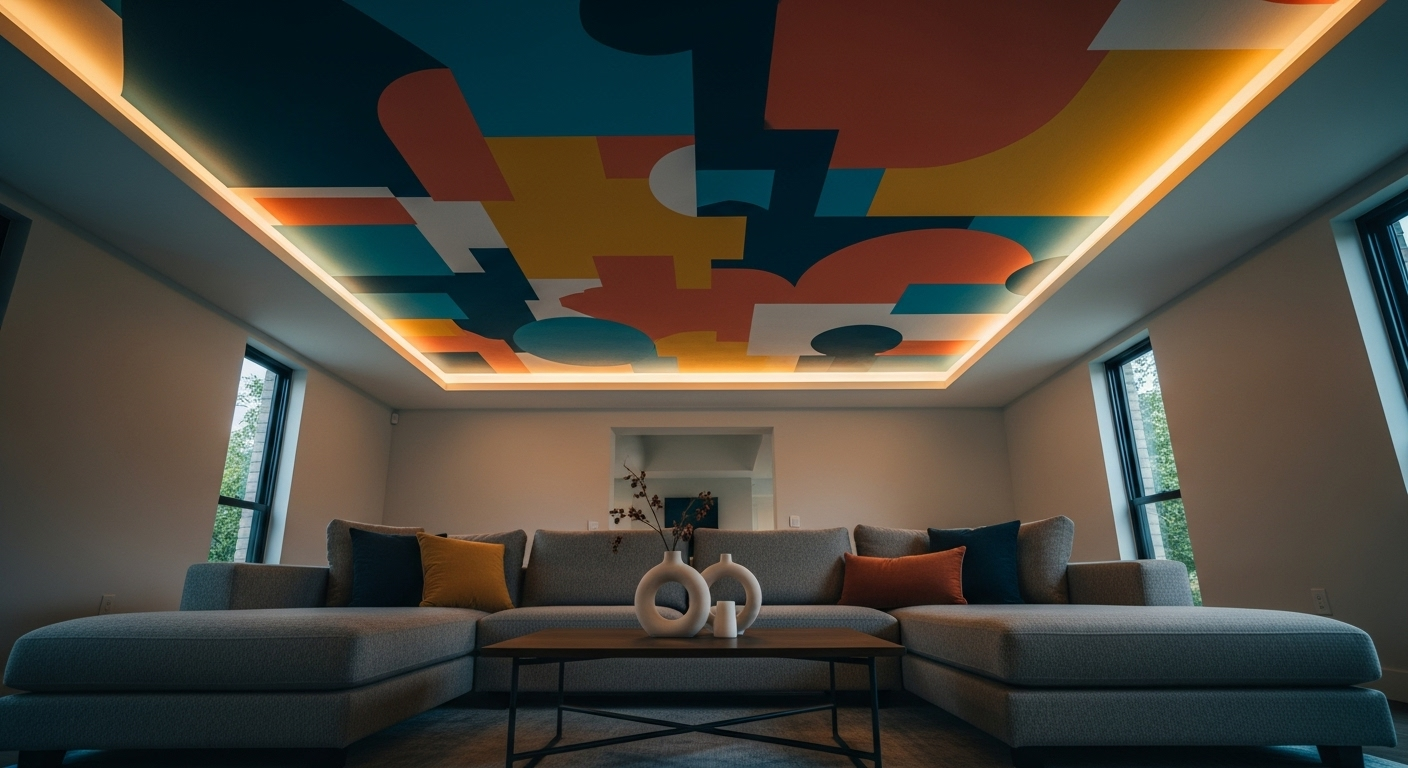Chromatic Ceilings: Elevating Interior Design with a Splash of Color
Imagine stepping into a room where the ceiling commands as much attention as the carefully curated furniture below. A bold splash of cerulean blue overhead transports you to a Mediterranean paradise, while a rich emerald green canopy evokes the lush tranquility of a forest retreat. Welcome to the world of chromatic ceilings, where the oft-neglected "fifth wall" becomes the star of the show, transforming ordinary spaces into extraordinary sanctuaries.

A Historical Canvas: From Sistine Chapel to Contemporary Homes
The practice of adorning ceilings with color and artistry dates back millennia. Ancient Egyptians painted celestial scenes on tomb ceilings, while Greek and Roman structures featured intricate frescoes overhead. Perhaps the most famous example is Michelangelo’s Sistine Chapel ceiling, a masterpiece that continues to captivate viewers centuries later.
In more recent history, Victorian-era homes often featured ornate, painted ceilings as a symbol of wealth and sophistication. However, as modernism took hold in the 20th century, white became the default ceiling color, prized for its ability to make spaces feel larger and brighter.
Today’s resurgence of chromatic ceilings marries historical grandeur with contemporary sensibilities, offering a fresh take on an ancient art form. Designers are eschewing traditional patterns and murals in favor of bold, solid colors or subtle gradients that complement modern aesthetics.
The Psychology of Overhead Hues
Color psychology plays a crucial role in the impact of chromatic ceilings. Different hues can evoke specific moods and alter our perception of a space. For instance, cool blues and greens can create a sense of calm and expansiveness, making them ideal for bedrooms or home offices. Warm tones like reds and oranges can add energy and coziness to living areas or dining rooms.
Interestingly, the color of a ceiling can also affect our perception of its height. Light colors tend to make ceilings appear higher, while darker shades can create a more intimate, cocoon-like atmosphere. This knowledge allows homeowners to manipulate the feel of a room without structural changes.
Techniques and Trends in Ceiling Chromatics
The application of color to ceilings has evolved beyond simple paint. Today’s designers are experimenting with a variety of techniques to create stunning overhead displays:
-
Ombre effects: Gradual color transitions create a soft, dreamy atmosphere.
-
Metallic finishes: Gold, silver, or copper accents add glamour and reflect light.
-
Textured applications: Techniques like sponging or ragging add depth and interest.
-
Geometric patterns: Bold shapes and lines create visual intrigue and define spaces.
-
Glow-in-the-dark paints: Create a starry night effect for bedrooms or entertainment areas.
Practical Considerations for Chromatic Ceilings
While the allure of a colorful ceiling is undeniable, there are practical aspects to consider before taking the plunge:
Lighting: Colored ceilings can affect how light is reflected in a room. Darker colors may require additional lighting sources to maintain brightness.
Room size: While color can be used in any space, it’s essential to consider scale. Smaller rooms might benefit from lighter hues or partial color application.
Maintenance: Textured or intricate designs may require more upkeep than simple, painted surfaces.
Resale value: While personal taste should guide home design choices, it’s worth considering how potential buyers might react to bold ceiling colors if selling is a future possibility.
Chromatic Ceilings in Different Room Types
The versatility of colored ceilings allows for creative applications throughout the home:
Bedrooms: Soft, soothing colors can promote relaxation and better sleep.
Living rooms: Statement colors can define the room’s character and complement furnishings.
Kitchens: Light-reflecting hues can brighten the space and create a cheerful cooking environment.
Bathrooms: Water-inspired blues or greens can enhance a spa-like atmosphere.
Home offices: Concentration-boosting colors like sage green or pale yellow can improve productivity.
The Future of Overhead Design
As technology advances, so too does the potential for innovative ceiling designs. Smart paint that changes color with temperature or lighting conditions is already in development. Additionally, projection mapping technology could allow for dynamic, ever-changing ceiling displays, transforming static color into interactive art.
The rise of eco-friendly and health-conscious home design is also influencing ceiling treatments. Low-VOC paints and natural pigments are becoming increasingly popular, allowing homeowners to embrace color without compromising indoor air quality.
Embracing the Fifth Wall Revolution
Chromatic ceilings represent a bold step away from the white-ceiling status quo, offering a new dimension of creativity in interior design. By treating the ceiling as a canvas for expression, homeowners can dramatically transform their living spaces, creating rooms that are truly unique and personally meaningful.
As with any design trend, the key to success lies in thoughtful application. Whether opting for a subtle pastel wash or a dramatic jewel tone, the right chromatic ceiling can elevate a room from ordinary to extraordinary, proving that sometimes, the most impactful design elements are right over our heads.





